What you can see
The Astronomical Park of Loiano is located at a distance of 37 km from Bologna, along the Strada Statale 65, also known as “Futa”, 1 km after Loiano when going towards Monghidoro. It is managed by INAF- Osservatorio di Astrofisica e Scienza dello Spazio di Bologna.

The Park has two telescopes, a planetarium and a didactic hall, placed in two different buildings.
From the Cassini Telescope it is possible to follow a path that reproduces the Solar System scale model, with the correct sizes and distances of the planets. The path reaches the Planetarium and the didactic hall.
Telescopes
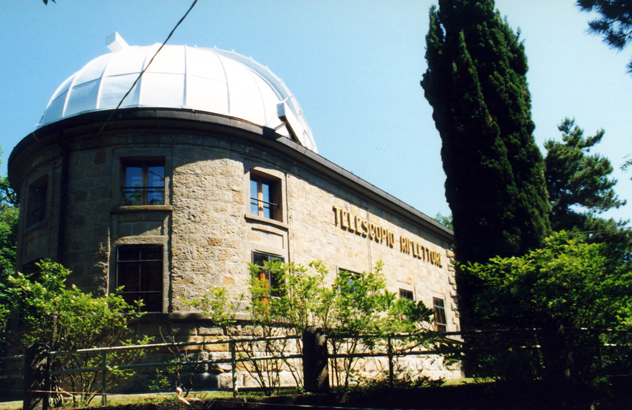
The Observing Station hosts the historical Zeiss Telescope which has a 60cm – diameter primary mirror, situated in via Nazionale 11, dating back to 1936, and dedicated to outreach and education. The modern Cassini Telescope, with a 152cm – diameter primary mirror, set in via Orzale 16, was inaugurated in 1976, is second in Italy for its size and is used for research.
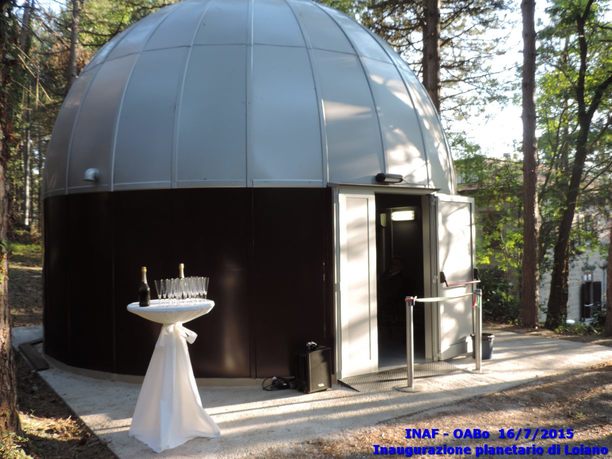 The Planetarium
The Planetarium
The Planetarium, in via Nazionale 11, is a 6-meter diameter dome on which the night sky is projected with digital technology. It was inaugurated on July 15th, 2015 and can host around 30 people, comfortably seated. The spectators are surrounded by the projection of the starry night. It is not only possible to observe the sky and discover its beauties, but also to experience a space exploration, flying above the Solar System planets, nebulae, galaxies, black holes and much more.
The didactic hall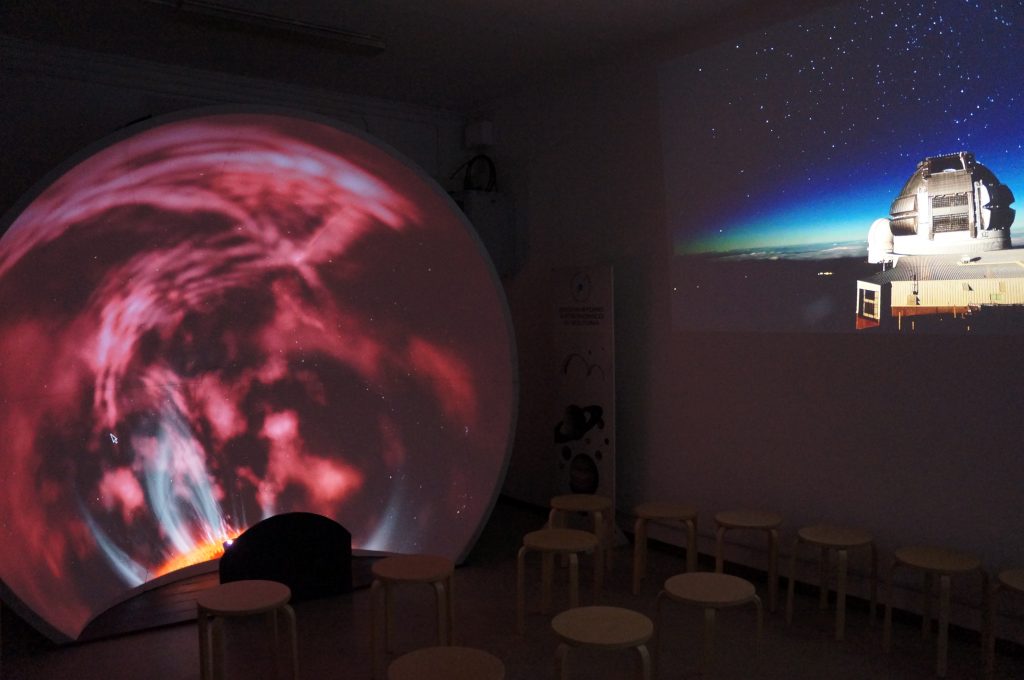
From via Nazionale 11 one can access the didactic hall, customised with images of astronomical objects, constellations, reproductions of some planet terrains, multimedial exhibits and a projection room, to attract the interest of visitors.
The Solar System model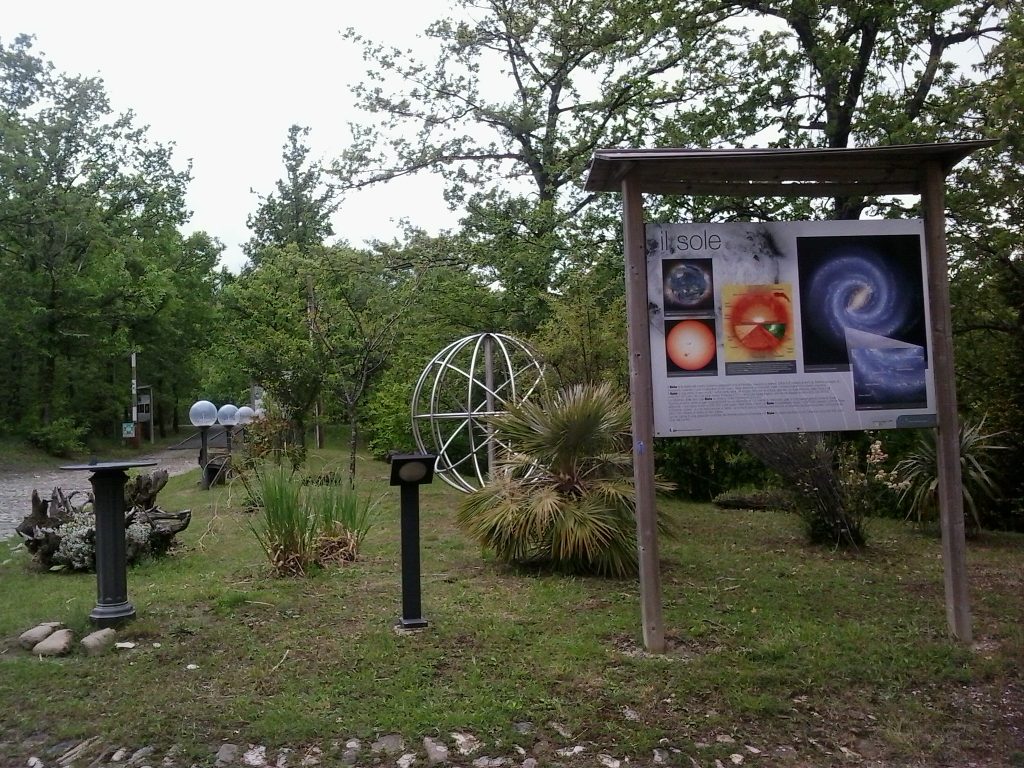
This model provides understanding of the real proportions of our Solar System and of the distances between the Sun and the other planets. Two scales were used for the construction of the model: one for the distances and another for the sizes of the planets. The path is enriched with infographic panels.
The cosmic calendar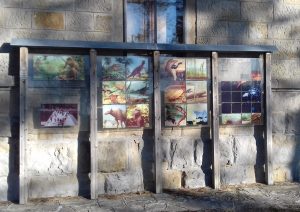
The Cosmic Calendar is located by the building of the historical Zeiss Telescope. We can imagine squeezing the history of the universe into a single terrestrial year. That’s how the Cosmic Calendar was born: from the idea of the famous American astronomer and writer Carl Sagan (1934-1996). Using that time scale, each second of the year corresponds to roughly 444 terrestrial years, and 31 of its days are approximately 1 billion years.
The solar clock
The solar clock is an instrument that indicates the hour of the day according to the Sun. A gnomon (greek word that means index) projects its shadow on a plane on which the hour lines are marked.
Visiting times
The solar clock can always be visited during the day and it can be found outside the Cassini Telescope. The Solar System model can always be visted during the day and winds along the path (with a part in the forest) that connects the Cassini Telescope, the historical Zeiss Telescope and the Planetarium. The Cosmic Calendar is viewable every day and is located outside the historical Zeiss Telescope. The Cassini Telescope can be seen only externally.
Guided tours of the historical Telescope, Planetarium, didactic hall and Solar System path are available by reservation all year round for groups and student groups.
Guided tours of the historical Telescope, Planetarium, didactic room and Solar System path are available on fixed dates only for families and individuals: please refer to the dedicated page for the scheduled days.
How to make a reservation
Schools and/or groups can make a reservation by sending an email to visite.loiano
Families, couples or individuals can book the scheduled dates only.
The Astronomical Station of Loiano consists of: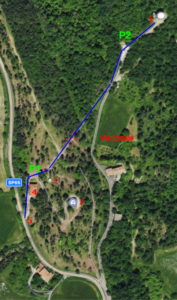
(1) G.D. Cassini Telescope
(2) Historical Zeiss Telescope with a 60 cm diameter mirror
(3) Planetarium
(4) Didactic hall
The blue line indicates the Solar System path, with a part in the forest, from the Sun (1) to Pluto (5).
The solar clock is next to the Cassini Telescope(1).
The Cosmic Calendar is next to the Zeiss Telescope (2).
Car parks are indicated by P1 and P2.
P2 can be freely accessed from via Orzale.
P1 can be accessed only during opening days from via Nazionale 11.
